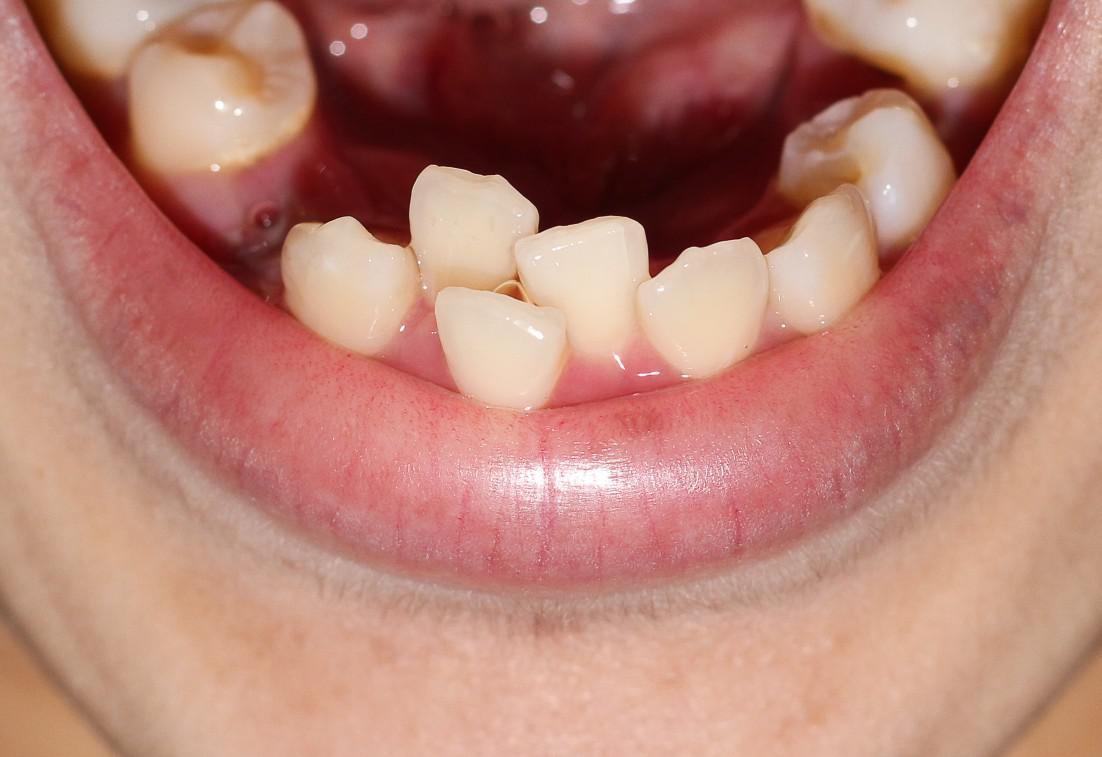 If you’ve made it to adulthood without needing braces, you might be in the clear – or not. Our mouths change over time due to factors ranging from facial trauma to natural jaw shifting. The good news is that it’s almost never too late to correct teeth and bite problems, and many can be addressed with braces.
If you’ve made it to adulthood without needing braces, you might be in the clear – or not. Our mouths change over time due to factors ranging from facial trauma to natural jaw shifting. The good news is that it’s almost never too late to correct teeth and bite problems, and many can be addressed with braces.
While each patient is unique, common signs you might benefit from braces include:
Crowded Teeth
One of the most obvious signs that you need braces is dental crowding. Crowded teeth can be due to a variety of factors, including genetics (if the teeth are larger than the jaw), losing baby teeth too early, or retaining them for too long, which prevents permanent teeth from erupting properly.
At first, crowded teeth might appear to be a purely cosmetic concern; however, it can lead to serious dental issues if left untreated. Food is more easily trapped in crowded teeth; it’s also harder to remove with regular teeth cleaning methods, like brushing and flossing. As a result, trapped food can lead to bad breath, tooth decay, gingivitis, and periodontal disease.
Gaps Between Teeth
Tooth gaps can result from natural skeletal development, genetics, or external factors, such as habits like thumb-sucking or tongue-thrusting, which push teeth out of alignment over time. Loss of a tooth can also create gaps, as teeth naturally move to fill in the vacant space, leaving gaps on either side of their original position. Additionally, gaps between teeth often indicate that the upper and lower jaw are not fitting together properly (a.k.a., malocclusion).
Gaps leave the gum tissue between teeth exposed and, therefore, at a greater risk of being affected by plaque, inflammation, and infection. Closing these gaps improve oral health, the aesthetics of your smile, and malocclusion problems.
Bite Issues
How the upper and lower teeth meet and interact when the mouth is closed is referred to as a patient’s “bite.” A misaligned bite, or malocclusion, is a serious condition that affects over 60% of U.S. adults.
Malocclusions can cause a number of problems, including jaw issues and chronic headaches. The temporomandibular joint (TMJ) is a hinge-like mechanism that connects the jawbone to the skull. When the jaw doesn’t fit together correctly, it easily slips out of place, creating tension. A misaligned bite prevents the TMJ from working properly, which can cause extreme pain in the temporomandibular joint and the muscles that control jaw movement.
Difficulty Chewing or Speaking
Severe cases of malocclusion can also affect the motions required to properly chew, speak and swallow. Symptoms include biting your cheek or tongue when chewing, problems with slurred speech or pronouncing certain words, or difficulty swallowing. Once jaw alignment is corrected, these symptoms remedy themselves.
Not all orthodontic issues are visible - some indicators might only be felt - but that doesn’t make them any less severe. Braces may be a treatment option if you’re experiencing one or more of the signs described above. We encourage you to reach out to our team to schedule a consultation today.


